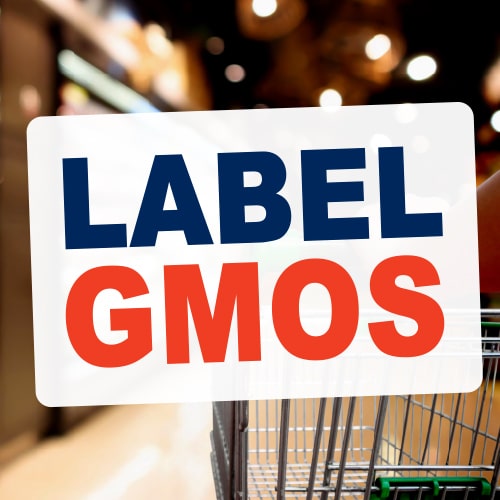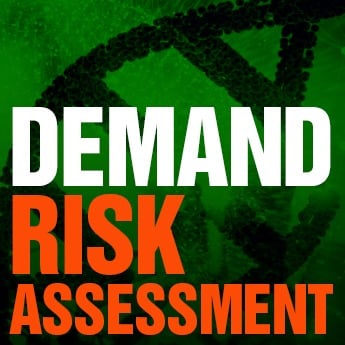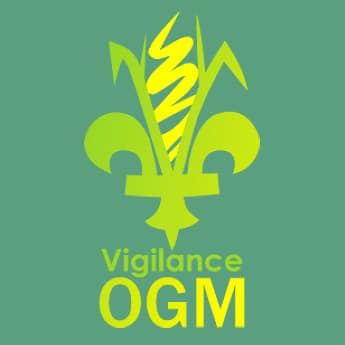Legalizing “Low-Level Presence” of Unapproved GMOs
By Lucy Sharratt, CBAN
Published in British Columbia Organic Grower, Volume 21, Issue 2. Spring 2018.
Contamination from genetically modified organisms (GMOs) is a problem for some crop types. For example, most organic grain farmers in the Prairies stopped growing canola after GM contamination of seed became widespread, and Canada’s flax industry is still recovering from GM contamination that closed export markets.
Contamination is a problem. But rather than take all measures possible to stop it, the federal government has responded by proposing a policy that accepts it as unavoidable. This Low-Level Presence (LLP) policy asserts that GM contamination is not the problem, but rather our unwillingness to accept it.
What to do about “Low-Level Presence” of unapproved GMOs?
Agriculture Canada says, “Genetically modified (GM) grain that has not yet been approved by the importing country may unintentionally be present, at low levels, in grain shipments exported to that country. This is what is called low level presence (LLP).” For GMO-producing countries like Canada, acceptance of LLP by our trading partners is a priority.
LLP is contamination from GMOs that have not yet been assessed for safety by the national regulator in the importing country. An LLP policy would not apply to contamination from a GM crop that was assessed as unsafe or that was not yet approved in any jurisdiction. The industry calls this latter type of contamination “Adventitious Presence” or AP but the distinction only matters for moving an LLP policy forward. Until LLP policies are established, both AP and LLP are illegal in every country. The goal of a Low-Level Presence policy is to overturn this global norm of “zero-tolerance” for contamination.
Canada is the fourth biggest producer of GM crops in the world (GM corn, canola, soy and a limited amount of GM alfalfa) and keeps exporting commodities contaminated with a Low Level Presence of GMOs that are not yet approved in our export markets, resulting in quarantined and rejected exports. CropLife Canada argues that acceptance of LLP will “provide stability” because “Mixing can happen during cultivation, harvest, transportation or storage of grain” and “Modern, efficient bulk grain handling systems not designed for segregation of different grain segregation of different grain sources”.[i]
Rather than implement controls and design grain segregation appropriately, the industry is asking national governments around the world to accept GMOs that they have not yet regulated. For example, Canada argues that other countries who had not evaluated the safety of GM flax should have accepted our GM flax contamination because Canadian regulators had approved it.
In 2011-2015, Agriculture Canada was proposing to make Canada the first country in the world to adopt an LLP policy, to lead by example. However, Canada’s progress on LLP is now more explicitly tied to progress internationally, with Canada acting as a leading global advocate.[ii] At the moment, Canada’s LLP policy proposal takes the form of a two-page policy model “designed to stimulate international discussions.”
Canada’s LLP Policy Model
While the industry also aims to establish LLP in seed,[iii] the current policy model from Agriculture Canada applies to whole grain, food and feed products, not to seed for propagation, fruits and vegetables or animals. The model proposes the following acceptable thresholds for LLP:
- A 0.2% contamination threshold to address LLP resulting from dust (for example, GM corn dust in a soybean shipment)
- A compliance threshold of 3% to address situations resulting from a foreign GM crop not yet approved in the importing country (for example, the GM flax that contaminated Canada’s flax exports to 36 countries).
Low-Level Presence would only be accepted if:
- the GM crop (GM event) is approved for food use in at least one country, in accordance with Codex Guidelines.
Canada also outlines two additional criteria for the 3% compliance thresholds to apply:
- Application for authorization of the GM crop was provided to the importing country; and
- Applicable LLP risk assessment(s) conducted by the importing country have determined, in advance, that the GM crop is unlikely to pose a risk.
In Canada, this means that LLP would be accepted if one other government has approved the GM crop, if Health Canada has received a request to approve the GM crop, and if our regulators have already concluded some type of “LLP risk assessment”. This last criteria is worth noting: the federal government is proposing to also establish some form of, as yet undefined, partial risk assessment for LLP. This would create two tiers of risk assessment for GMOs.
An LLP policy would mean that Canadians would be eating at least two types of legal GMOs: 1) those evaluated as safe for human consumption by Health Canada and 2) a small percent of those not yet approved by Health Canada but partially assessed and also approved by another government. The assumption is that full safety evaluation of a GM food is only needed if Canadians are eating more than 3%.
Assumptions-based vs science-based policy
A Low-Level Presence policy would put an end to claims of “science-based” regulation for GM food and environmental safety and replace it with an assumptions-based policy. Why is 3% of LLP consumption safe but not 4% or 5%?
The threshold is set by what the grain trade says it is willing to control in exports and accept in imports, not by what Health Canada and Environment Canada determines as safe. And we can only expect the percents to increase as the policy allows for contamination to more widely take hold. In fact, the industry is already asking for 4-5%.[iv]
An LLP policy rests on three major assumptions: contamination is inevitable; more GMOs will be developed and approved; and GMOs are safe or, more precisely, that GM foods not approved by Health Canada are safe to eat if another government says so and if Canadians don’t eat too much.
Low-Level Presence relies on a new precedent-setting pitch to Canadians and people around the world: that we don’t always need our national regulators to assess the safety of the GM food we eat.
Conclusion
LLP acceptance would allow GM contamination to gradually expand over time, because industry will have less incentive to control it. It would also be a self-fulfilling prophecy that could lead to the approval of many new GMOs such as GM wheat that otherwise face powerful opposition due to fears of trade disruption over contamination.
Organic and conventional farmers together rejected the fiction of “coexistence” with GM alfalfa.[v] The government and industry continue to promote coexistence strategies however, at the same time that they develop a policy to accept and legalize its failure.
**
For more resources and updates, including a link to Canada’s policy model, see www.cban.ca/llp
[i] Ian Affleck, CropLife Canada Update, Presentation to the Canadian Seed Trade Association Annual Meeting, Windsor, July 13, 2015. http://cdnseed.org/wp-content/uploads/2015/07/CropLife-Ian-Affleck.pdf
[ii] Agriculture and Agri-Food Canada, Low-Level Presence http://www.agr.gc.ca/eng/industry-markets-and-trade/agri-food-trade-issues/technical-trade-issues-in-agriculture/low-level-presence/?id=1384370877312
[iii] CropLife, Coexistence https://croplife.org/plant-biotechnology/stewardship-2/co-existence/
[iv] Ian Affleck, CropLife Canada Update, Presentation to the Canadian Seed Trade Association Annual Meeting, Windsor, July 13, 2015. http://cdnseed.org/wp-content/uploads/2015/07/CropLife-Ian-Affleck.pdf
[v] Canadian Biotechnology Action Network and National Farmers Union, “The Canadian Seed Trade Association’s so-called ‘Coexistence Plan’ is a Gateway to GM Alfalfa Contamination: Commentary and Technical Paper” July 2013. report https://cban.ca/wp-content/uploads/gm-alfalfa-rebuttal-to-industry-coexistence-plan-1.pdf





